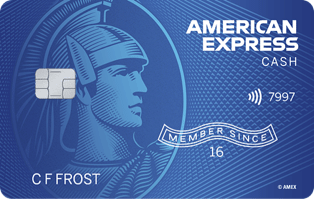- myFICO® Forums
- FICO Scoring and Other Credit Topics
- Understanding FICO® Scoring
- Re: New Card drop a few points
- Subscribe to RSS Feed
- Mark Topic as New
- Mark Topic as Read
- Float this Topic for Current User
- Bookmark
- Subscribe
- Mute
- Printer Friendly Page
New Card drop a few points
Is your credit card giving you the perks you want?
Browse credit cards from a variety of issuers to see if there's a better card for you.
- « Previous
-
- 1
- 2
- Next »
- Mark as New
- Bookmark
- Subscribe
- Mute
- Subscribe to RSS Feed
- Permalink
- Report Inappropriate Content
Re: New Card drop a few points
@jawbrkr wrote:So the points drop is not uniform no matter the card carrier. If say person X has an AAOA of 6 momths and person Y has an AAOA of 2years. Both open a new account. Would it be fair to say X would suffer a bigger point loss than Y due to the lower AAOA?
Actually, Y would likely see a bigger drop in score than X. (Side note - profiles are grouped into scorecards ... or buckets. Impact of a factor on score is influenced by the profile's credit history and assigned scorecard. Point changes up/down associated with an "event" are variable by profile).
A few things come into play here. The 1st being how many cards in the profile before adding another one. Assume two profiles have the same age of oldest account and same AAoA - say 5 years but # accounts is different.
Example: A profile having 9 cards should experience less of a score change than a profile with 3 cards because the AAoA does not change much. In both cases you get an inquiry and age of youngest account drops to newborn status.
Now consider two profiles - both having 2 cards but vastly different AAoA and age of youngest account. Each adds a new card.
1) Profile #1 has an AAoA of 4 years with newest card being 2 years old.
* AAoA drops from 4 years to 2 years (integer count only) and newest account drops from 2 years to 1 month.
2) Profile #2 has an AAoA of 6 months with the newest card being 3 months old.
* AAoA drops from 6 months to 4 months with the newest account dropping from 3 months to 1 month.
Impact of opening a new account is greater for profile #1 and this will likely be seen as a bigger score drop. (Note: Profile #1 will also be starting from a higher score base than profile #2)
One strategy to help achieve high scores is getting the cards you need/want in an initial 5 year timespan and then allow them to age up. This potentially eliminates the need for new credit (from a CC perspective - installment loans are a different discussion). Along the way request CLIs on existing cards to build up available credit.
Fico 8: .......EQ 850 TU 850 EX 850
Fico 4 .....:. EQ 809 TU 823 EX 830 EX Fico 98: 842
Fico 8 BC:. EQ 892 TU 900 EX 900
Fico 8 AU:. EQ 887 TU 897 EX 899
Fico 4 BC:. EQ 826 TU 858, EX Fico 98 BC: 870
Fico 4 AU:. EQ 831 TU 872, EX Fico 98 AU: 861
VS 3.0:...... EQ 835 TU 835 EX 835
CBIS: ........EQ LN Auto 940 EQ LN Home 870 TU Auto 902 TU Home 950
- Mark as New
- Bookmark
- Subscribe
- Mute
- Subscribe to RSS Feed
- Permalink
- Report Inappropriate Content
Re: New Card drop a few points
Nice and thoughtful response by TT.
Quick note: most of the responses on the thread thus far assume that only two scoring factors are affected by a new credit card:
(1) a possible inquiry (associated with applying for the card)
(2) a lowering of one's average age of accounts (AAoA)
There's a third factor.. The FICO models also simply look at whether a consumer has opened any new credit cards recently. In other words, you could have two guys (Bob and Fred) who currently have the same AAoA, the same number of inquiries, same number of accounts, same total age of profile, etc. The only difference is that Bob opened a credit card two months ago but Fred's last card was opened 2 years ago. Bob gets a ding for that which Fred does not, because opening a new revolving line of credit is associated with a slight increase in risk. That factor goes away after a short while, assuming one establishes a solid payment history on that card.
- Mark as New
- Bookmark
- Subscribe
- Mute
- Subscribe to RSS Feed
- Permalink
- Report Inappropriate Content
Re: New Card drop a few points
And yet another factor: if that card reported with a balance, it can skew the number of tradelines with balance category which might well be the -3 points.
FWIW I've never dropped when adding a new tradeline except when I crossed an AAOA boundary other than the inquiry damage; however, I've never been clean from a 2 year stretch either as has been pontificated previously.
Some benefits to my relatively thick file that's admittedly still pretty young: I went from 36 months to 27 months as a result of adding 6 tradelines between mortgage, PLOC, and 4 credit cards.





















- Mark as New
- Bookmark
- Subscribe
- Mute
- Subscribe to RSS Feed
- Permalink
- Report Inappropriate Content
Re: New Card drop a few points
@Revelate wrote:And yet another factor: if that card reported with a balance, it can skew the number of tradelines with balance category which might well be the -3 points.
FWIW I've never dropped when adding a new tradeline except when I crossed an AAOA boundary other than the inquiry damage; however, I've never been clean from a 2 year stretch either as has been pontificated previously.
Some benefits to my relatively thick file that's admittedly still pretty young: I went from 36 months to 27 months as a result of adding 6 tradelines between mortgage, PLOC, and 4 credit cards.
Same for me...
- Mark as New
- Bookmark
- Subscribe
- Mute
- Subscribe to RSS Feed
- Permalink
- Report Inappropriate Content
Re: New Card drop a few points
I to dont really see score decreases from adding new tradelines. Its the aaoa that will do it for me.
My aaoa accounts went from 62 months to 44 months after adding all of the accounts. I saw a small score drop, for a minute history went from good to fair but then a month went by, I added some more cards and history went to good. lol
I have added a lot of tradelines this year and my scores have not flucuated more than 3-9 points each.
I also quit worrying about small score drops. that took me a while to come to terms with but the points come back fast.
- Mark as New
- Bookmark
- Subscribe
- Mute
- Subscribe to RSS Feed
- Permalink
- Report Inappropriate Content
Re: New Card drop a few points
@Anonymous wrote:
@Revelate wrote:And yet another factor: if that card reported with a balance, it can skew the number of tradelines with balance category which might well be the -3 points.
FWIW I've never dropped when adding a new tradeline except when I crossed an AAOA boundary other than the inquiry damage; however, I've never been clean from a 2 year stretch either as has been pontificated previously.
Some benefits to my relatively thick file that's admittedly still pretty young: I went from 36 months to 27 months as a result of adding 6 tradelines between mortgage, PLOC, and 4 credit cards.
Same for me...
Ahhh. That makes sense. 0 - 2yrs is one boundary....2-4 is another and then so on and so forth. I guess if doesnt matter if you still remain in the same boundary even if your AAOA drops.



|| TU08: 811 || EQ08: 811 || EX08: 802 ||
- Mark as New
- Bookmark
- Subscribe
- Mute
- Subscribe to RSS Feed
- Permalink
- Report Inappropriate Content
Re: New Card drop a few points
Hi Jawbrkr. The general belief here seems to be that any AAoA between two integers is the same. Thus, 3.1, 3.3, 3.8, 3.95 are all the same.
Thus, when your score changes as a result of AAoA, it must be because you crossed over onto a new whole number. But exactly where the breakpoints are is hidden in FICO's proprietary model(s). So it would be more than anyone reliably knows to say that the shift happens at exactly 2, 4, 6, 8, 10, 12, etc.
Actually, my guess is that AAoA breakpoints may occur at every integer early on: 1, 2, 3... and then when you get a bit higher they may start happening more rarely. E.g. I wouldn't be surprised if an AAoA of 15-20 (say) was one category.
- Mark as New
- Bookmark
- Subscribe
- Mute
- Subscribe to RSS Feed
- Permalink
- Report Inappropriate Content
Re: New Card drop a few points
Gotcha! At least it helps me understand it a little better.



|| TU08: 811 || EQ08: 811 || EX08: 802 ||
- Mark as New
- Bookmark
- Subscribe
- Mute
- Subscribe to RSS Feed
- Permalink
- Report Inappropriate Content
Re: New Card drop a few points
@Anonymous wrote:Hi Jawbrkr. The general belief here seems to be that any AAoA between two integers is the same. Thus, 3.1, 3.3, 3.8, 3.95 are all the same.
Thus, when your score changes as a result of AAoA, it must be because you crossed over onto a new whole number. But exactly where the breakpoints are is hidden in FICO's proprietary model(s). So it would be more than anyone reliably knows to say that the shift happens at exactly 2, 4, 6, 8, 10, 12, etc.
Actually, my guess is that AAoA breakpoints may occur at every integer early on: 1, 2, 3... and then when you get a bit higher they may start happening more rarely. E.g. I wouldn't be surprised if an AAoA of 15-20 (say) was one category.
I suspect AAoA might be: less than 2, 2, 3, 4-5, 6-7, 8-9 and +10. I realize some reports say: Fico high achievers typically have an AAoA of 11 years or more. Even so, 10 years is a likely plateau (or said differently, a zero demerit point threshold) - IMO.
Off Topic Background Info
I believe Fico (and other credit score models) are structured like gymnastics or ice skating . Depending on degree of difficulty (e.g. scorecard); you start at a certain max score and then points are deducted for flaws in execution. The likely factors that relate to scorecard assignment have been discussed in other threads.
A lower starting score might relate to absence of a key element - such as an installment loan. However, if you bump up your degree of difficulty and fail to execute (take a fall in gymnastics - e.g. late payment on installment loan) the penalty can be severe.
Fico 8: .......EQ 850 TU 850 EX 850
Fico 4 .....:. EQ 809 TU 823 EX 830 EX Fico 98: 842
Fico 8 BC:. EQ 892 TU 900 EX 900
Fico 8 AU:. EQ 887 TU 897 EX 899
Fico 4 BC:. EQ 826 TU 858, EX Fico 98 BC: 870
Fico 4 AU:. EQ 831 TU 872, EX Fico 98 AU: 861
VS 3.0:...... EQ 835 TU 835 EX 835
CBIS: ........EQ LN Auto 940 EQ LN Home 870 TU Auto 902 TU Home 950